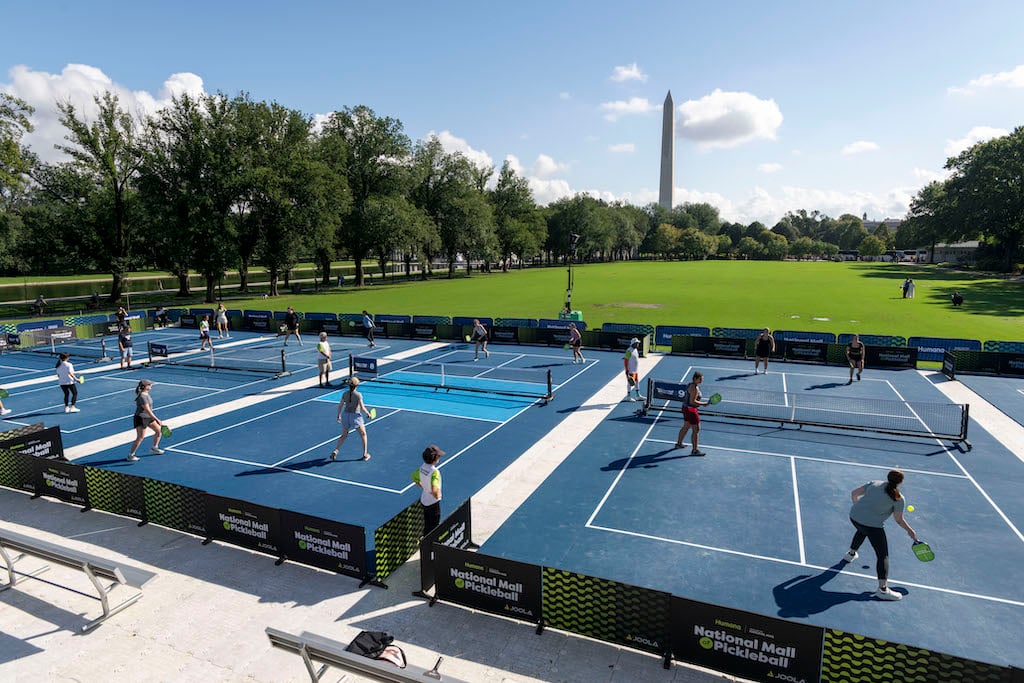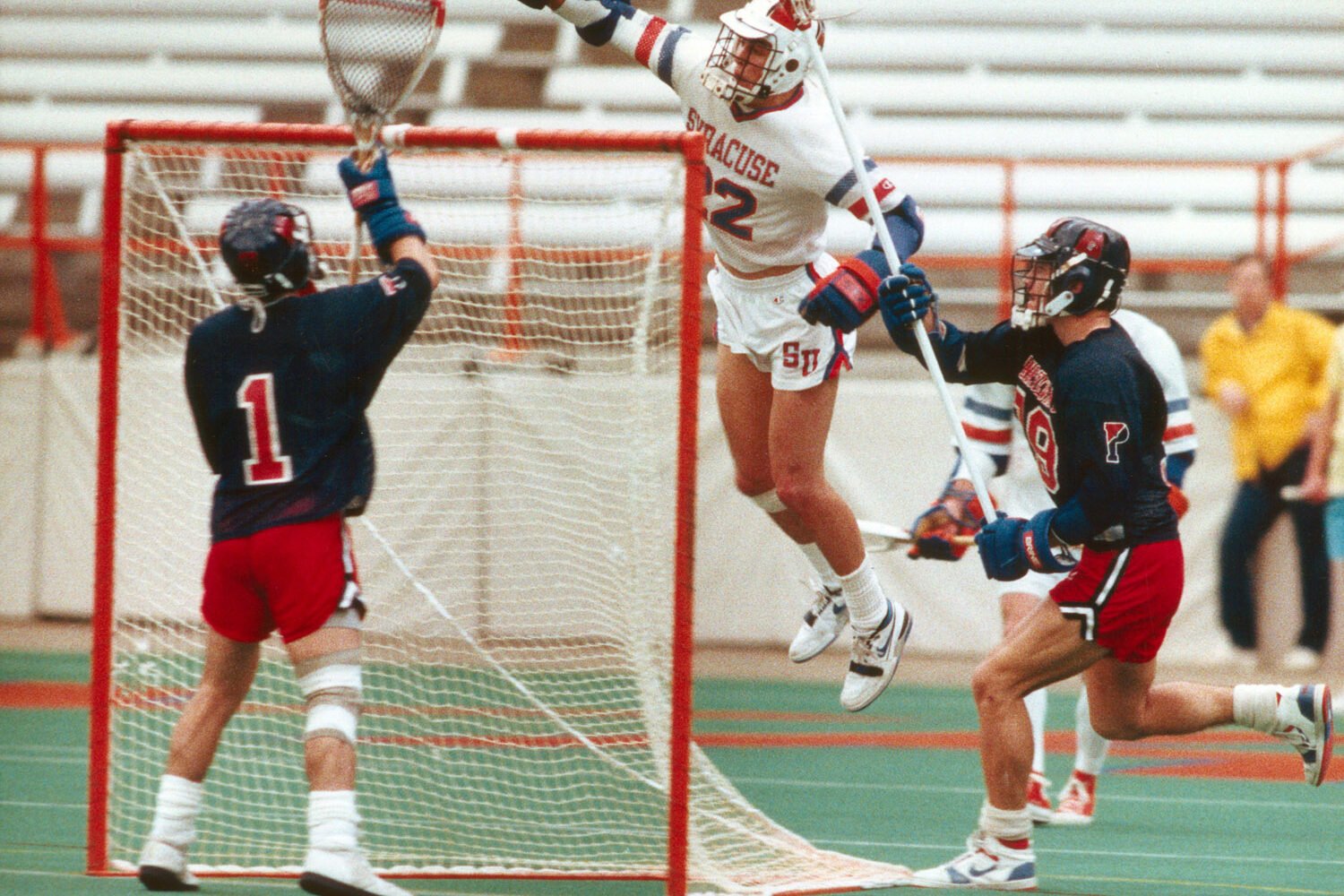TERPS FACE FAVORED VOLS IN SUGAR BOWL
–Washington Post, January 1, 1952
IT WAS THE SECOND "GAME OF THE CENtury." The first, played in New York five seasons before, had featured undefeated Notre Dame, ranked number one, against undefeated Army, ranked number two.
Final score: Notre Dame 0, Army 0.
The second battle of undefeateds, scheduled for New Orleans on New Year's Day 1952, would find General Robert Neyland's Tennessee Volunteers, ranked number one, lined up against Jim Tatum's Maryland Terrapins, ranked number three. Two explosive teams, neither likely to play for a scoreless tie.
For college-football fans, it came as no surprise that Tennessee, a Southeastern Conference powerhouse with five All-Americans, would be one of the Sugar Bowl teams. But Maryland?
"Nobody expected us to get that far," recalls former Terrapin Chet Hanulak, a 165-pound halfback. "But Jim Tatum was a coach who could work wonders."
Tatum had been lured to Maryland by university president H.C. "Curley" Byrd, who viewed building a winning football team as a way to raise the university's profile.
At six-foot-four, Tatum towered over most of his players and was just the coach Byrd was looking for. In the winter of 1946 Tatum arrived at the College Park campus with the look and swagger of a winner.
"I didn't come here to coach losers," Byrd's new hire told reporter Morris Siegel–words that raised hopes among football fans throughout the area.
Washington in the late 1940s was suffering through the postwar decline of its beloved Redskins. Tatum, an outgoing coach given to wearing Western-style hats, quickly became a local favorite.
"Jim Tatum was a master psychologist and great recruiter," says longtime Terrapins booster Jack Heise, Class of '47. "His teams went into every game believing they could win. And they usually did."
ONE OF TATUM'S PRIZE RECRUITS, BOB Ward, remembers his first talk with the coach after he came home from wartime service.
"I'd been recruited by Alabama but got a call to visit the Maryland campus," Ward recalls. "I think his words were 'I hear you're a pretty good player.' But when I arrived on campus he took one look and said, 'I thought you were bigger than that.' "
Ward, who now lives in Annapolis, still laughs over Tatum's reaction. At five-ten and 182 pounds, he was small for a guard, even by standards of that era. But under Tatum's tutelage, he would become a two-way All-American. Along with linebacker Dave Cianelli, Ward would co-captain Maryland's Sugar Bowl team.
Other recruits during Tatum's early years included All-American quarterback Jack Scarbath; the Modzelewski brothers, Ed ("Big Mo"), a fullback, and Dick ("Little Mo"), a defensive tackle; and all-purpose quarterback/punter Bernie Faloney, Scarbath's sophomore understudy.
All were part of the 1951 Terrapin squad that won the Southern Conference championship while going undefeated in a nine-game schedule that included SEC powers Georgia and LSU.
Scarbath, a Baltimore native who now lives in the town of Rising Sun in northeastern Maryland, tells of Tatum's "always finding something to motivate us for a big game.
"When we played Georgia, he showed up with a game program showing they charged $7.50 for all their other games but only $5 for ours. He said, 'They don't think very much of you, do they?' "
The final score of that game was Maryland 43, Georgia 7. But it would take more than locker-room gimmicks to beat Neyland's Tennessee Vols.
INTIMATES CALLED THE Tennessee coach "Bob," but to his players he was General Neyland, an iron-handed former Army engineer who turned out hard-hitting teams that won by sticking to fundamentals.
No fancy offensive tricks for the General. He considered formations like the split-T no substitute for the meat-and-potatoes single wing he'd used since the days when helmets were made of leather, not plastic.
In Hank Lauricella, Neyland had a triple-threat athlete with one of the best arms in college football. But under the Neyland system, as one Tennessee observer noted, "the theory was that when you put the ball in the air, three things could happen, and two of 'em were bad."
"Neyland won't show Maryland any fancy stuff . . . because Tennessee doesn't go in for fancy stuff," wrote Post columnist Shirley Povich before the game. "The typical Tennessee guard is about five feet ten and weighs most of 190. Neyland doesn't demand them big. He likes the squatty kind that can up-end the opposition and deal out that punishment below the waist. . . . This is a typical Neyland team, a bruiser, not flashy, but slightly murderous."
When Neyland's team took off from Knoxville for the Sugar Bowl, it didn't head for New Orleans but for Baton Rouge, 90 miles north of any Bourbon Street distractions. And when one Vol guard wired from upstate New York that he couldn't make the plane because he was snowed in, the General wired back: TO FRANCIS HOLOHAN, NIAGARA FALLS, N.Y. . . . START WALKING.
THOUGH ALL PLAYERS WERE ABOARD when the Terrapins headed south on December 26, the flight was anything but uneventful. Grounded in New York because of mechanical trouble, the team arrived at its training site in Biloxi, Mississippi, five hours late. As a result, reported Mo Siegel, "the Terrapin squad became the first team to practice at night for a Sugar Bowl game.
"Tatum was in such a hurry to practice his squad that the players did not even have a chance to eat dinner," wrote Siegel.
Tatum's biggest worry, he told reporters, was how his younger players would react to the pressure of playing before some 85,000 fans. Not that this was Maryland's first bowl game: Two years earlier the Terps had beaten Missouri 20-7 in the Gator Bowl.
But the Gator wasn't the Sugar, and Missouri's Tigers, though formidable, weren't Bob Neyland's top-ranked Tennessee Volunteers.
"They're the best team we've ever faced," said Tatum, who drove his team hard during the week leading up to the game. "They are so much better than we are that they probably don't need the practice. But we do–and we'll get it."
TATUM HAD HIS SUPERSTITIONS. AFTER arriving in Biloxi, he discovered he hadn't packed the Western-style hat and faded socks he'd worn to all his team's winning games. After a call to College Park, the good-luck items were rushed, air express, to arrive in New Orleans by kickoff.
A more practical ritual Tatum followed before games was to focus attention on the quarterback, the key player in his split-T offense.
"Bernie Faloney was usually my roommate when we were on the road," says Jack Scarbath. "But not in New Orleans. The coach moved in, and we went over game plans. I went to sleep dreaming formations and play calls."
Game day came up warm and humid. Of the 82,500 spectators in the Sugar Bowl, about 25,000 were from Tennessee, outnumbering the 12,000 Terrapin fans who had paid anywhere from the regular price of $6.50 to a scalper's price of $20 a ticket.
With no national television, the only way to follow the game from College Park was by radio. Alumni parties blanketed the Washington area as the faithful gathered around their Philcos and Motorolas to hear Jim Tatum's boys take on the nation's number-one team.
Tatum's game plan, Fred Heise recalls, was to "go right at Tennessee's strength. Pound it up the middle, where they least expected."
No razzle-dazzle, no fancy split-T plays. As Tatum later told reporters, the idea was to run straight at Ted Daffer, the Volunteers' All-American guard. Carrying the ball would be "Big Mo" Modzelewski. Clearing the way, helmet to helmet against Daffer, would be Bob Ward, described by one pro scout as "the greatest little lineman I've ever seen."
Maryland hoped to beat Tennessee at its own game: Keep the offense simple and play smash-mouth football–which, in an era when players didn't wear face masks, meant exactly that.
As Shirley Povich predicted in the Post, "Only one thing is certain about tomorrow's ball game in the Sugar Bowl. Both teams will get their lumps."
"The single wing wasn't made for catch-up football."
–Gene Moeller, Tennessee lineman
IN TODAY'S OFFENSE-MINDED FOOTBALL, punting is considered a tactic of last resort. Fourth and one? Kick the ball, hope to do better your next possession.
But for a Neyland-coached team, the soaring punt–on any down from first to fourth–was an offensive weapon: Back the opposing team up in its own territory, harass the ball carrier, create a turnover.
"We punted for field position," says Tennessee fullback Al Kozar, who's written a book on his coach's theory of the game. "Neyland had no faith in long drives. He wanted to cut the field in half, force a mistake, then take the ball in."
It was a fair description of what both coaches tried to do for the first ten minutes of the game. Tennessee's Hank Lauricella and Maryland's Bernie Faloney exchanged a series of booming punts as each team waited for the other to turn the ball over.
Then, after a weak 30-yard kick by Lauricella, the Terrapins struck: In 11 plays, with "Big Mo" Modzelewski and halfback Ed Fullerton pounding out yardage, Tatum's team scored.
Maryland 7, Tennessee 0. With three quarters left, nothing for Tennessee to panic over. But the next 30 seconds would, in Al Kozar's words, "put us in a spot we'd never been in before."
There were no "special teams" in the 1950s. You kept your best men on the field at all times. So it was that on the ensuing kickoff, an All-American tackler, Bob Ward, would collide with an All-American runner, Hank Lauricella, jarring the ball loose and giving Maryland possession on the Tennessee 13-yard line.
Five plays and an extra point later, the score was Maryland 14, Tennessee 0–and Jim Tatum could take the risk of removing his lucky hat, if only for a moment, to salute his players as they came off the field.
TREMENDOUS TERPS SHATTER TENNESSEE, 28-13
–Washington Post, January 2, 1952
"WE NEVER GAVE UP," SAYS AL Kozar, "even when the score was 21-0. We played hard to the final whistle." Then, with a laugh: "I've said for 50 years, if we'd played another quarter, we would've won."
Bob Neyland, though bitterly disappointed, took the defeat with straight-backed military grace: "We were soundly beaten by a superior football team," he said. "I don't think I have seen a better one."
Four thousand fans were at National Airport when the Terrapins arrived home. The crowd kept up a chant of "Maryland number one!"–though the football polls in those days closed at the end of the regular season.
"Officially we ended the '51 season ranked number three," says Jack Scarbath. "But in our hearts we always felt we were number one."
It was Scarbath who provided the Hollywood ending to the Terrapins' victory. At a postgame banquet, he was introduced to one of Maryland's prettiest cheerleaders.
Fifty years later, Jack and Marilyn Scarbath, who'll celebrate their golden wedding anniversary in June, still remember in vivid detail the New Year's Day that changed their lives–the day of Maryland's greatest game. *

















